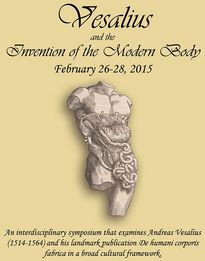Last week I attended this interdisciplinary symposium hosted by the Saint Louis University and Washington University. This three-day event was inspired by the landmark publication of Andrea Vesalius’s "De humani corporis fabrica, libri septem" (Basel, 1543 and 1555) and the new critical edition and translation of this work, the New Fabrica. Two of the keynote speakers were Daniel Garrison and Malcolm Hast, authors of the new Fabrica by Karger Publishers. Besides them there were several internationally-renowned speakers, art exhibits, presentation of academic papers of leading research, a public anatomy demonstration, rare books workshops, and a publishers’ exhibit hall.
Because the Fabrica represented a collaborative project involving a scientist (Vesalius), a humanist (Johannes Oporinus, the printer), and an artist (Jan van Kalkar), the goal of the conference was to encourage a network of scholars working in disparate fields to explore the potential for future interdisciplinary research. This objective was clearly attained, as I was able to speak and share with rare books curators, university librarians, artists, anatomist, physicians, poets, historians, etc., all of them brought together by the shared admiration for Andreas Vesalius, his work, his publications, and his legacy.
There were many highlights in this symposium and I will try to cover some of them in a series of articles. The first one was a presentation by Dr. Stephen N. Joffe, where he described the number of Vesalius' books still in existence in the US and estimates around the world. It was interesting to me that and estimated 600 first edition Fabricas were ever published, and that of those only a fraction exist today, most in university libraries!
Another highlight was the presentation by Pascale Pollier, a Belgian artist, of the Vesalius Continuum project, part of which are the Fabrica Vitae art exhibit that was available to the attendees and the public for the duration of the symposium. Another part of Vesalius Continuum was the meeting in Zakynthos, Greece in 2014. Pascale also presented the process of creation of a bust of Dr. Gunther Von Hagens, the inventor of the system of plastination.
Probably the most rewarding segments of this symposium were the question and answer sessions after each presentation.




